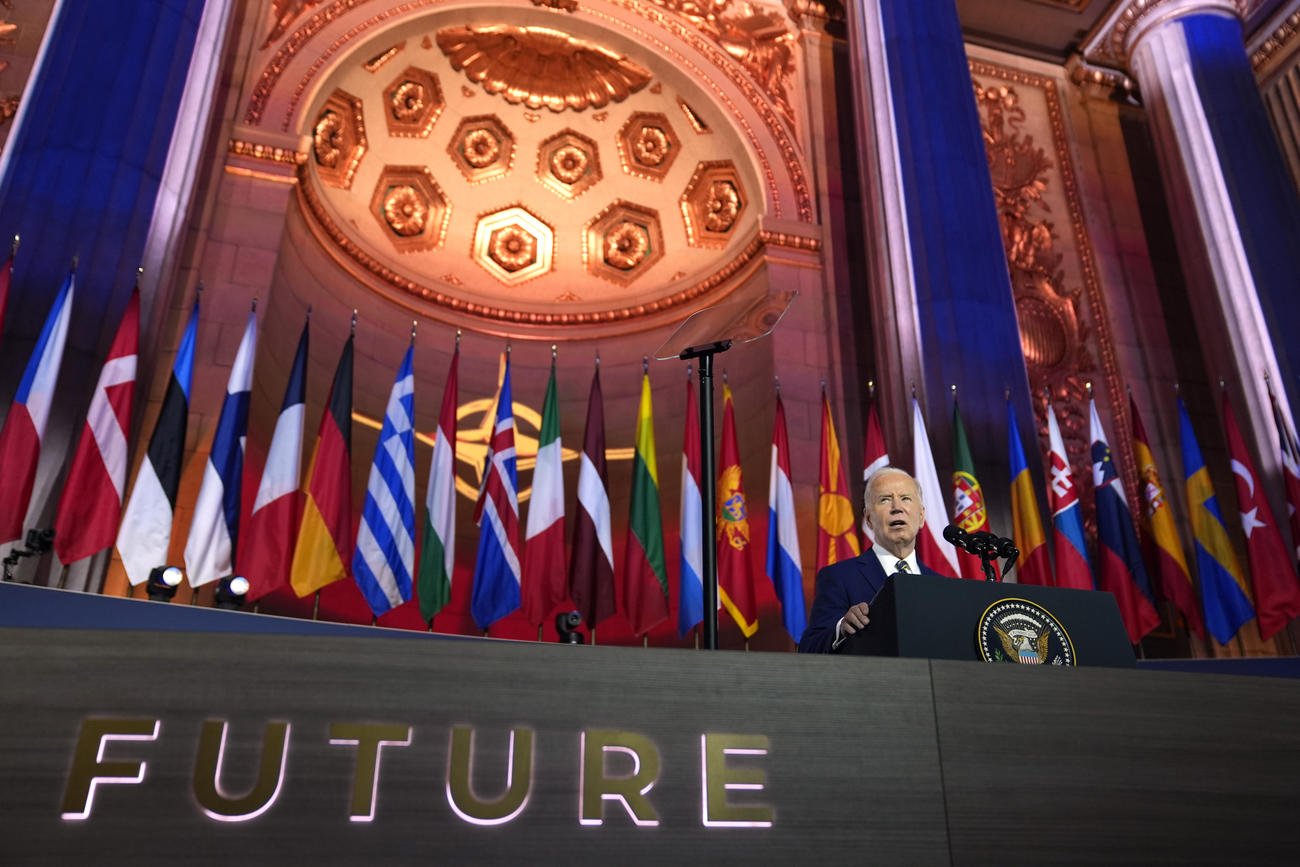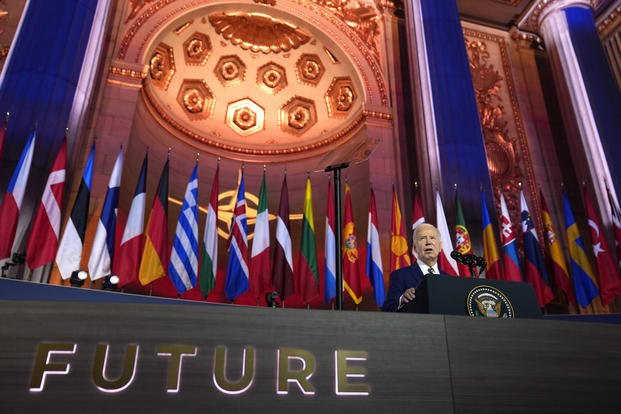

WASHINGTON — NATO countries are moving to shore up their weapons production capabilities as a hedge against the November presidential vote, signing a nearly $700 million contract for more Stinger missiles and making pledges to boost their own defense production.
Ukraine, a partner that relies on military aid from the NATO members, is opening a small office in Washington to strengthen its ties to the U.S. defense industry. Regardless of whether President Joe Biden or former President Donald Trump wins the U.S. election, the alliance and Ukraine want to be in a better position to provide more of their own defense needs.
The announcements came Tuesday at the start of the NATO summit in Washington, where leaders were focused on the need both to support Ukraine and to make sure the alliance is prepared for any future threats.
Before Russia’s 2022 invasion, Oleksandr Kamyshin, Ukraine’s minister of strategic industries, worked on his farm.
“I was a happy Ukrainian dealing with agriculture and knowing nothing about military things,” Kamyshin said. Ukraine in 2021 produced no ammunition and started the conflict with the stocks it had on the shelves, he said.
That is quickly changing as Ukraine is developing a sophisticated drone industry, producing more weapons domestically and working to more deeply embed itself with defense companies in the U.S. and Europe.
“We are re-profiling ourselves from agricultural country to the arsenal of a different world,” Kamyshin said.
Biden on Tuesday announced another major air defense package for Ukraine, and outgoing NATO Secretary General Jens Stoltenberg announced that the alliance had signed the Stinger contract.
“There is no way to provide strong defense without a strong defense industry,” Stoltenberg said while announcing the contract.
The Stinger is a portable surface-to-air defense system that can be carried and fired by troops or mounted onto a vehicle and used as short-range defense against aircraft.
The Raytheon-produced system was one of the first weapons the U.S. shipped to Ukraine following Russia’s invasion. It is now among hundreds of types of systems, and tens of millions of rounds of ammunition, artillery and missiles, that countries have pulled from their stockpiles to help Ukraine. But the rapid push over the past two years exposed that defense firms both in the U.S. and in Europe were not set to produce at the levels needed in a major conventional war.
The NATO summit is occurring against a backdrop of uncertainty. U.S. political divisions delayed weapons for Ukraine for months and the upcoming presidential election is raising concern that U.S. backing — with weapons and troops — in case of threats against member countries may not always be guaranteed.
Trump, the presumptive Republican nominee, has boasted during campaign speeches that he’d encourage Russia to do as it wished with NATO members that do not meet their commitment to spend 2% of their gross domestic product on defense.
Kamyshin, who spoke at a nighttime event Tuesday on the EU defense industry, said growing Ukraine’s defense industry should put it in a stronger position regardless of who wins the U.S. election.
“Defense industry should be strong regardless of the elections of the parties,” Kamyshin said. “But I heard that the Republicans stand for defense industry as well.”
It’s not just Ukraine. In both the U.S. and throughout Europe, some defense production lines were stagnant at the time of the 2022 invasion and are only now getting production numbers up. The buildup has been dependent on getting new, longer-term contracts signed to support more capital investment in the needed infrastructure.
“This is not about shifts or a bottleneck. It’s building new factories,” said Morten Brandtzaeg, the chief executive officer of Nammo, a Norway-based ammunition firm.
The war also spurred NATO members to increase the amount they spend on defense.
Out of 32 NATO members, 23 are expected to meet the 2% commitment this year, up from just six before Russia’s invasion. That’s seen as still not enough, as Russia has leveraged the sheer size of its workforce to rapidly replace weapons lost in the war.
“If you want to fight a war for a long time, you need to have an industry behind you that has the capacity for a long time,” Brandtzaeg said.
Estonian Defense Minister Hanno Pevkur said Russia is now spending an estimated 7% to 9% of its GDP on defense. Estonia is spending more than 3% of its GDP on defense, but needs to do more to refill its stockpiles, Pevkur said.
Polish Defense Minister W?adys?aw Kosiniak-Kamysz, who also serves as a deputy prime minister, said his country will commit at least 4% of its GDP to defense this year.
The war in Ukraine “exposed major weaknesses of Poland, of region and of the world at large,” Kosiniak-Kamysz said.
Since the invasion, the U.S. has provided more than $53.6 billion in weapons and security assistance to Ukraine. This support, at a time when the U.S. also is sending weapons to Israel and Taiwan, has strained the U.S. stockpile. The rest of the NATO members and other international partners have provided about $50 billion altogether in weapons and security assistance, according to the Kiel Institute for the World Economy, an independent research organization based in Germany.
National security adviser Jake Sullivan said Tuesday that for the first time ever, the NATO countries will each pledge to make plans to strengthen their own industrial defense capacity. He said this would help the alliance “prioritize production of the most vital defense equipment we would need in the event of a conflict.”
The 32 members have widely varying defense industry sizes and capabilities, so each country’s plan could vary widely, from partnering with industry to partnering with other countries.
___
Cook reported from Brussels.
© Copyright 2024 Associated Press. All rights reserved. This material may not be published, broadcast, rewritten or redistributed.
